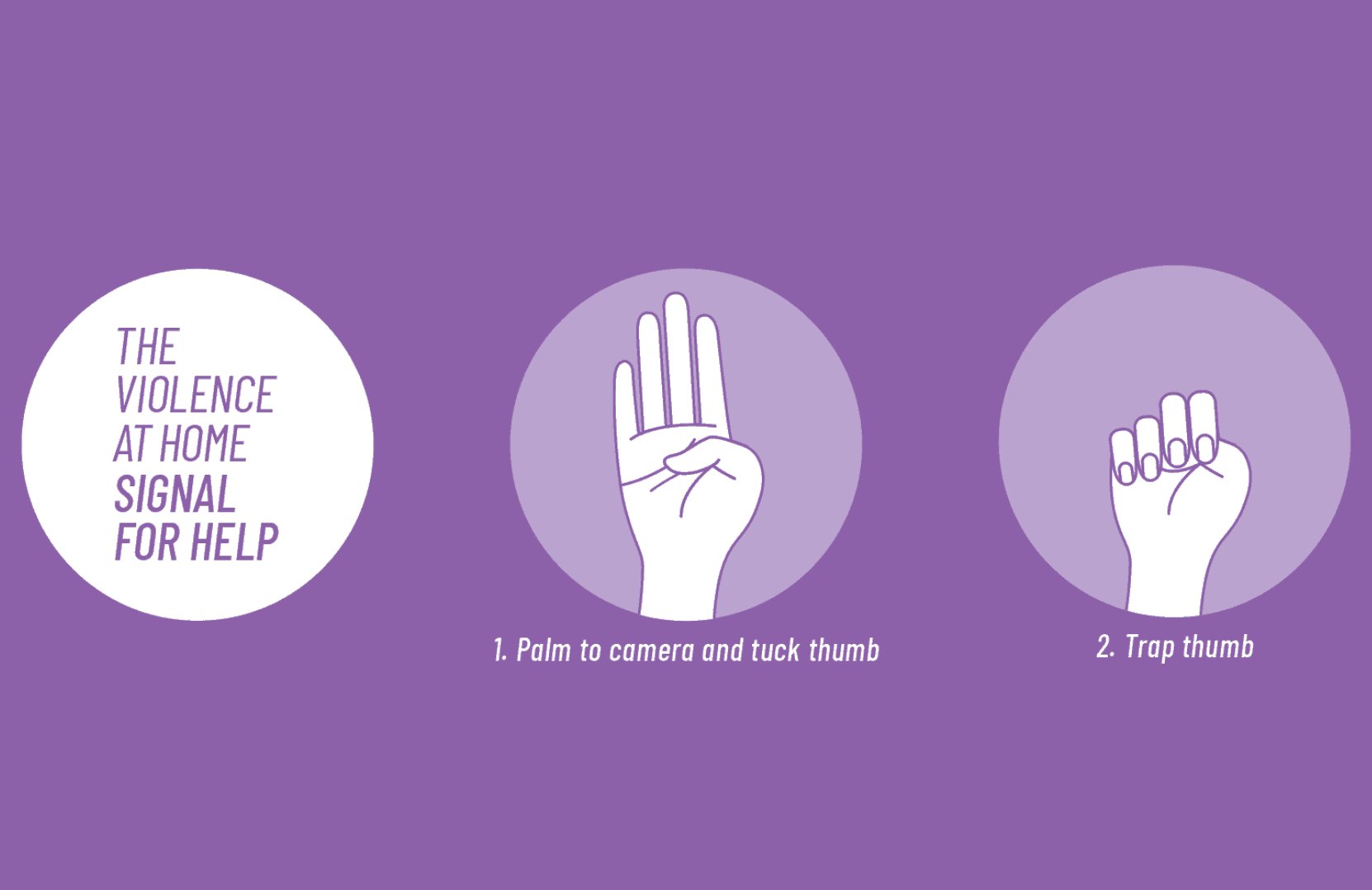The pandemic has resulted in increased levels of domestic abuse across the world, and this is no different in Edmonton.
The Edmonton Police have reported that domestic violence calls are up 15 per cent compared to 2020, and Erin Bilawchuk, the director of development at WINhouse (an Edmonton women’s shelter), notes that these calls only represent the instances of domestic violence that are reported. Seventy per cent of people who experience domestic violence do not report it to the authorities.
WINhouse is seeing higher levels of domestic violence as well, and Bilawchuk explains that they are having to turn away two to three people a night because there just isn’t enough space.
The Canadian Women’s Foundation launched a campaign called “the Signal for Help” in April 2020 to address increased levels of domestic violence and help people in vulnerable situations quietly and discreetly express their need for help.
“People are spending more time at home and have less access to get out, so there are very limited opportunities to get out of the house,” says Bilawchuk. She notes that the isolation paired with the extra stress of the pandemic can lead to abusive situations.
The Signal for Help campaign introduced a signal that has since been popularized on social media across the world.
The signal itself is very simple. First, you hold up your hand, then tuck your thumb into your palm so you’re holding up four fingers, and then close your four fingers over your thumb to form a fist.
“It’s a great, easy, discreet action that someone can take,” says Bilawchuk. But there are still challenges to be addressed with the signal: most importantly, the confusion about what action to take if someone sees the signal.
“It’s great that there’s that signal out there,” says Bilawchuk, “but if you don’t have in your own mind what action you would take or what action is appropriate… that (vulnerable) person continues to stay in danger, or you put that person in further danger and alert their perpetrator.”
It is not always appropriate to call the authorities if you see the Signal for Help, explains Bilawchuk. She notes that the response to a Signal for Help should always be dependent on the situation.
“We love the fact that there are people watching and looking and that there’s a way for an individual who’s in a harmful situation to signal somebody else,” says Bilawchuck. “It would be great to say, yeah call 911, but that may not be exactly the help that that person is looking for.”
Bilawchuk says that it is always important to check with the person in need before taking action. “If you can, bump into the person and quietly ask if they need help,” she says. “If you see them in a grocery store line, slide them your phone number, or say, ‘It looks like you need help.’”
“Be prepared to alert a store manager or someone like that that you’ve seen this (signal) and confirm that they are looking for help,” continues Bilawchuk.
The nonverbal signal can also be used over a video call. If you do see the Signal for Help over a group video call, make sure to message the person privately and ask if they need help. “Just be really intentional about what actions you’re taking and make sure that you’re respecting the privacy of the individual,” says Bilawchuk.
What you should not do, is verbally ask a person in a vulnerable situation if they need help over a group call. “If their predator is in the room with them, all anonymity of request for help is gone,” says Bilawchuk.
Asking yes or no questions is also important, in case their perpetrator overhears the conversation.
Whatever action you take, make sure that it does not put yourself or the person asking for help in a dangerous situation. Base your actions on your own comfort level and be safe.
If you are in immediate danger, call 911. If you need help and aren’t in immediate danger, call a crisis line such as WINhouse’s: 780-479-0058. Their social workers and crisis intervention workers can help you figure out next steps.
Image: canadianwomen.org





0 Comments